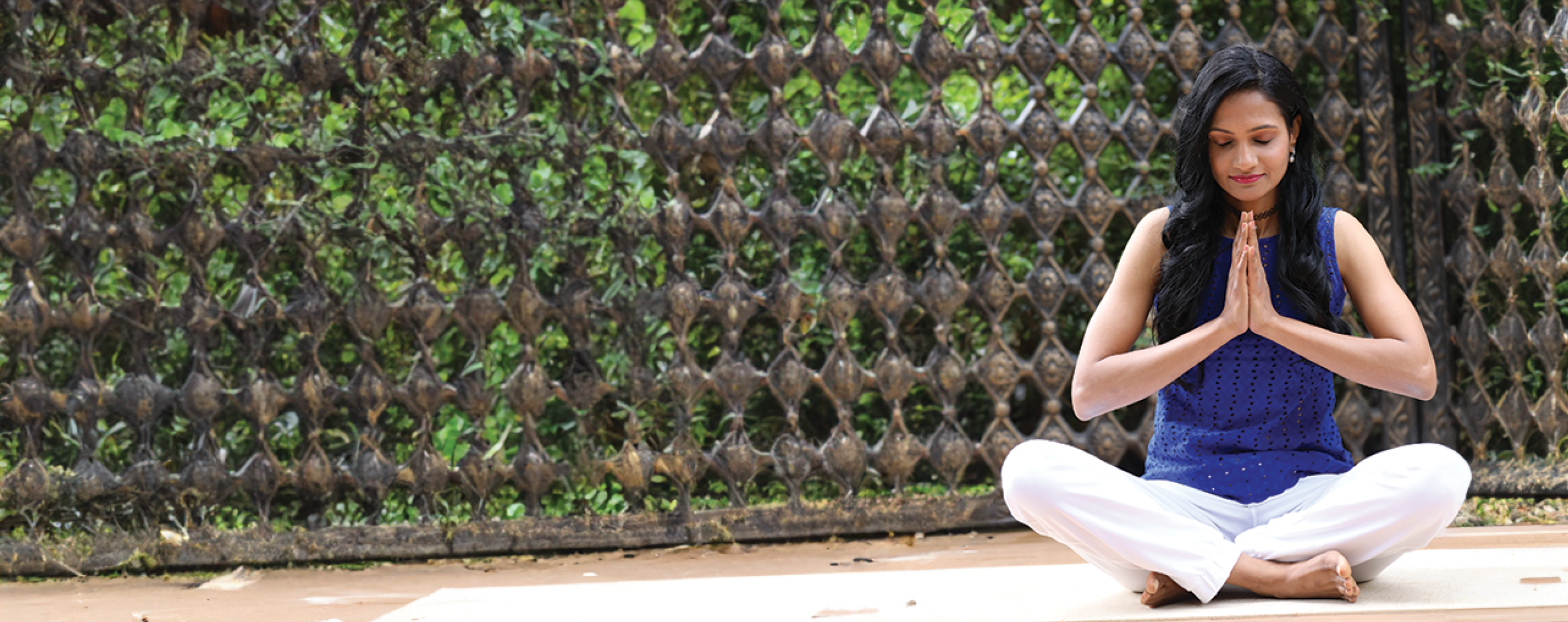Yoga for Mental Health: A Path to Peace
Harness the Power of Yoga to Cultivate Calm, Clarity & Emotional Strength


In a world where burnout, anxiety, and digital overload are the new norm, the need for inner balance has never been greater. Yoga for mental health is not just a buzzword—it’s a transformative practice that provides the mind with the same care and attention we give the body. At Trimuk Yoga, led by the highly regarded Radhika Bargava, India Excellence Award 2024 winner, we offer a compassionate and holistic approach to using yoga as a tool for mental well-being.
Yoga isn’t simply about flexibility or fitness—it's about harmony. This blog explores how traditional yoga practices, combined with breathwork and mindfulness, can support emotional healing, improve mental clarity, and cultivate lasting peace.
The body and mind are intrinsically connected. Emotional stress manifests physically—in our breath, posture, digestion, and energy levels. Likewise, mental resilience improves when the body is nourished, grounded, and aligned.
Yoga works on this mind-body axis by:
Through a combination of movement, breath, and meditation, yoga empowers individuals to respond—not react—to life’s challenges.

While yoga is not a replacement for therapy or medication, it’s a powerful complement to mental health care. Research and practice show yoga can support individuals facing:
At Trimuk Yoga, our students experience not just momentary relief but long-term shifts in mindset, resilience, and clarity.

Practicing asanas combined with controlled breathing significantly lowers cortisol levels, bringing calmness to the nervous system.
Yoga stimulates the production of endorphins and balances serotonin levels, acting as a natural mood enhancer.
Poses like Legs-Up-the-Wall and guided Yoga Nidra prepare the body for deep, restorative sleep.
Through mindful movement and breath, yoga fosters inner connection and a stronger sense of self.
Yoga teaches how to stay grounded through discomfort, making it easier to navigate emotional turbulence.

These poses release physical tension and promote emotional balance:
Conscious breathing regulates the nervous system and centers the mind:
Mental health thrives in the present moment. Regular meditation can:
Try This: 5-minute daily mindfulness practice: Sit quietly, observe your breath, and gently bring your mind back when it wanders.
A powerful form of guided relaxation, often called "yogic sleep," Yoga Nidra:
At Trimuk Yoga, we believe mental health should be nurtured with the same commitment as physical wellness. Under the guidance of Radhika Bargava, we:
With a deep understanding of the mind-body connection, Radhika creates a safe, non-judgmental space where healing becomes possible.

“Before joining Trimuk Yoga, I was overwhelmed with anxiety. With Radhika’s guidance, yoga has become my safe space, helping me reconnect with myself. I sleep better, think clearer, and feel lighter every day.” – Aarti, Trimuk Yoga Student
Mental wellness is not a destination—it’s a daily practice. Through yoga for mental health, we learn to pause, breathe, move mindfully, and reconnect with our inner stillness. Whether you’re looking to reduce stress, ease anxiety, or cultivate joy, yoga offers a timeless path to healing.
At Trimuk Yoga, we welcome you to explore this journey with us. Let yoga be your tool for mental clarity, emotional strength, and a life lived in peace.
🧘♀️ Ready to begin your mental wellness journey? Join Trimuk Yoga’s holistic programs today.

A correct pelvic floor contraction feels like a gentle lifting and tightening of the muscles you’d use to stop the flow of urine or hold in gas—without tensing your belly, thighs, or glutes. In yoga, we combine breath awareness with subtle engagement to help you build mind-muscle connection.
At Trimuk Yoga, we guide you through these movements step-by-step using visualizations and alignment cues to ensure you’re activating the right muscles safely and effectively.
Consistency is key. We recommend:
You don’t need long sessions—small, regular practice is more effective than occasional intense effort. Our guided routines at Trimuk Yoga are beginner-friendly and designed to integrate easily into your day.
Yes—pelvic floor strengthening is one of the most effective natural remedies for urinary incontinence and bladder leaks. With regular practice, you can:
Our yoga-based approach not only strengthens but also releases unnecessary tension, creating balanced and responsive pelvic muscles.
Pelvic floor health is important for everyone, regardless of gender.
While Trimuk Yoga focuses on women’s wellness, men can also benefit from pelvic floor awareness to improve:
The same principles of breath, posture, and mindful movement apply.
Results vary from person to person, depending on consistency and initial muscle condition. Most people notice improvements in:
At Trimuk Yoga, we help you track progress gently—celebrating the small milestones along your journey to a stronger foundation.
